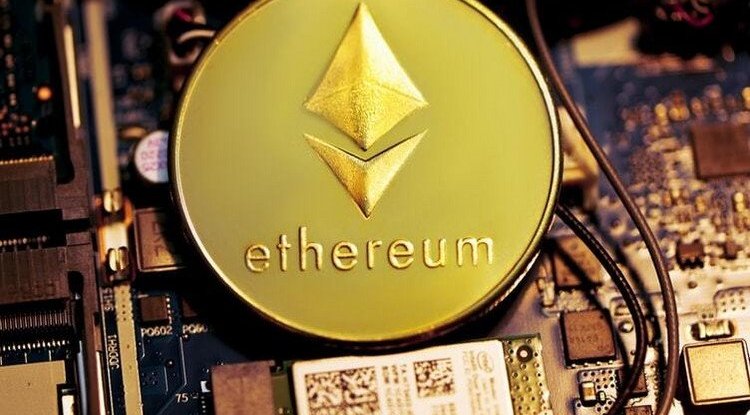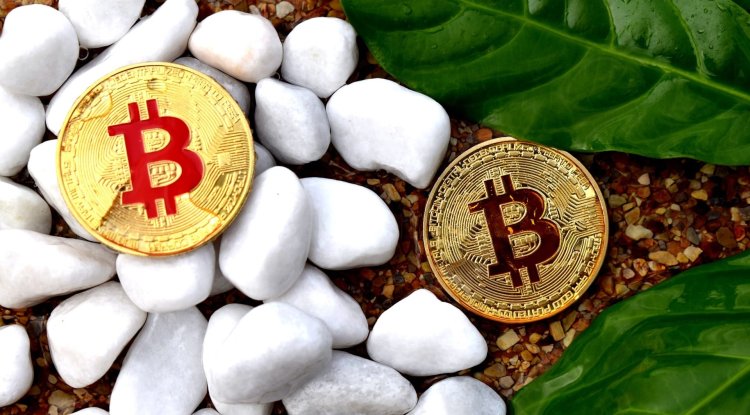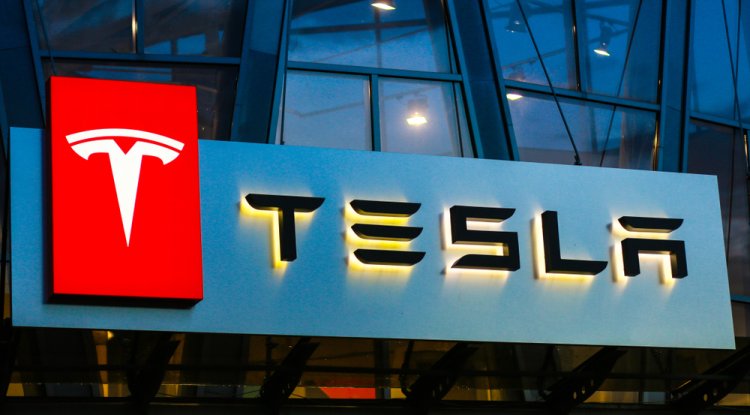What is EIP-1559 and why is it so important for ethereum?
Ethereum has dominated the crypto industry in its short six-year history. While bitcoin made headlines thanks to spectacular ups and downs, ethereum cemented itself as the blockchain of choice on which developers build applications.

Ethereum has dominated the crypto industry in its short six-year history. While bitcoin made headlines thanks to spectacular ups and downs, ethereum cemented itself as the blockchain of choice on which developers build applications.
But with that dominance came a number of challenges. First and foremost is the timing of transactions. Although faster than bitcoin’s ‘slow’ 3 to 5 transactions per second, ethereum’s capacity can currently handle 10 to 15 transactions per second. The popularity of ethereum has resulted in the amount of gas paid per transaction (the fee due to miners for including a transaction in a block) rising sharply in times of increased demand. In January of this year, transaction fees were at one point, as high as $ 500. For miners, ethereum became a literal gold mine.
In May, ethereum mining revenues reached $ 2.35 billion and remained high. While this is good news for miners, it has forced a number of smaller projects that required low transaction fees to look for alternative blockchain systems to reduce costs for users. EIP-1559, as it is called, will help improve the user experience around sending a transaction via ethereum and increase the shortage of ethereum, effectively making the second most valuable cryptocurrency more scarce and theoretically valuable. What is the Ethereum Improvement Proposal (EIP)?
Ethereum’s evolution is largely determined by the suggestions made by the community that maintains the network. These are collectively called ethereum enhancement suggestions and usually involve a developer or group of developers proposing changes to the network who then review and discuss the underlying developers who manage ethereum’s code repository on Github, a code storage platform.
If the improvement is accepted, it is usually bundled with other enhancements in broader network upgrades called hard forks. The previous hard fork was named after the city of Berlin and included numerous security improvements and new types of transactions. EIP-1559, first introduced by Vitalik Buterin and a set of core developers in April 2019, was added to the hard fork that took place two days ago under the name London hard fork. What is EIP-1559?
Proposal EIP-1559 is designed to make transactions on ethereum more efficient. Currently, ethereum has an auction system that determines which transactions are in the package within which blocks.
The more the user is willing to pay, the more likely the miner is to include the transaction. The busier the network, the higher the fee, which means users have to consider network congestion when trying to estimate the total cost of sending transactions.
By moving to EIP-1559, this system will be replaced by a fee structure that the network automatically values. In addition, a system of so-called tips will allow individuals who want their transactions to be verified more quickly, to pay the miner to do so. Ether burning
Although the EIP-1559 proposal was designed to help reduce transaction costs, its design was created to burn/destroy a specific portion of each transaction. This is because the base fee that a user pays to perform transactions, instead of going to the miner, is effectively ‘burned’ by reducing the amount of supply.
Markets are excited about this perspective because ultimately removing a certain amount of ether from circulation could create pressure on supply because the amount of new ether entering circulation is limited (currently to 2 ether per block). Much like halving with bitcoin, which takes place every four years, it reduces the amount of new bitcoin that enters circulation.
Reducing the ether supply thus puts deflationary pressure on the ethereum network. Although new quantities are still created with each block added to the chain, a certain portion of the ether also disappears. Deflationary pressure theoretically pushes prices upward as supply growth slows and if demand continues to rise.
Crypto investor Nikhil Shamapant wrote that there is too much supply shock to be included in investor price expectations. In April, when the price was close to the current level, he calculated that sales pressure would fall by about 30 percent with EIP-1559, meaning that much less ethereum would be available in the markets to buy. He called the combination of EIP-1559 and the upcoming transition to proof-of-stake (POS) / Ethereum 2.0 'triple halving', as it would reduce sales pressure by about 90 percent, the equivalent of three bitcoin halving. Basic advantages of EIP-1559
1. Better estimate of transaction fees
2. Creates a symbiotic relationship between ether, the ethereum network, and its users
3. Allows more reliable inclusion of transactions What EIP-1559 does not do
1. It does not lower fee prices in the long run
2. Does not make ether automatically deflate by default
First, EIP-1559 does not make online transactions cheaper in the long run. Fee prices vary based on the demand to submit a transaction relative to the supply of available block space. This EIP only helps to smooth out fee prices, allowing block size to increase slightly during sudden increases in demand. This does not increase the scalability of the chain and is therefore not a solution that will lower fee prices in the long run.
Second, although a certain amount of ether is burned for each transaction, this does not necessarily mean that it will be burned enough to offset the current issuance rate. For this to happen, a basic fee of 150 gwei (fee unit) should be maintained to compensate for the current issuance of ethereum on the proof-of-work system (POW) and to compensate for the current issuance on the future proof-of-stake the system (POS) would require a basic fee of 20 gwei. Current auction price fees
Currently, ethereum uses the first-price auction for transactions, which means that the users who bid with the highest prices are the ones who are most likely to conduct their transactions. However, the biggest problem with this model is that fee prices can fluctuate wildly due to sharp increases in demand for Ethereum’s limited block space. Users often have to gamble when they submit a transaction and often overpay to ensure that their transactions are included. Overall, EIP-1559 seeks to provide a better user experience by changing the way transaction fees are estimated and the way the network handles increases in usage. Important changes made by EIP-1559
The base fee is the minimum price of the fee required for the transaction to be included in the block. It is set by the protocol and is variable, it is part of the block header and it is part of the total fee to be burned. The priority fee (type) is the price that the user is willing to give to the miner to process the transaction. This is set by the user, and is part of the transaction, and is paid to the miners. Max Fee is the highest total fee a user is willing to pay for a transaction. It is set by the user and is part of the transaction.
As a result, users will have much greater security when submitting a transaction because they only need to ensure that they include enough to pay the basic fee and a low priority fee to include their transaction. The user does not have to worry about overcharging the fee because the rest is returned to them and not paid to the miner. By creating a new type of transaction, wallets and other services/infrastructure providers will need to upgrade it to support it. Variable block size
Currently, ethereum has a fee limit that covers all blocks at 15 million gas. A constraint can be thought of as a block size in ethereum that limits the number of transactions that can fit into a single block. Currently, whenever there is an increase in demand, fee prices rise dramatically because the blocks are always full and limited to a certain size.
EIP-1559 makes it so that block size can be temporarily increased to accommodate a sudden influx of demand. Variable block sizes smooth out fee prices by allowing the protocol to temporarily increase available block space. This results in an easier increase in inter-block fee prices in the short term. Burning basic fee
While miners are given priority compensation, the basic compensation is burned and removed from circulation. The primary reason for this is that if the basic fees were paid to the miners, they would be encouraged to keep it as much as possible to maximize profits (and they could also spam the network with high fees for transactions that could be reimbursed later if they mine the block ).
Burning the basic fee guarantees that the miners are indifferent to it. With EIP-1559, it is necessary to include a small amount of ether as the basic network fee in order for the transaction to be accepted as valid, thus creating a healthier relationship between ether as an asset/token and the ethereum network. Conclusion
EIP-1559 is poised to greatly improve the user experience on ethereum for transaction processing. Of course, most people like to focus on the aspect of burning fees and removing a certain amount from circulation, but the overall benefits of EIP-1559 far outweigh the burning of fees and will have a positive impact on end-users.
By: Olivia J. - Gossip Whispers





































